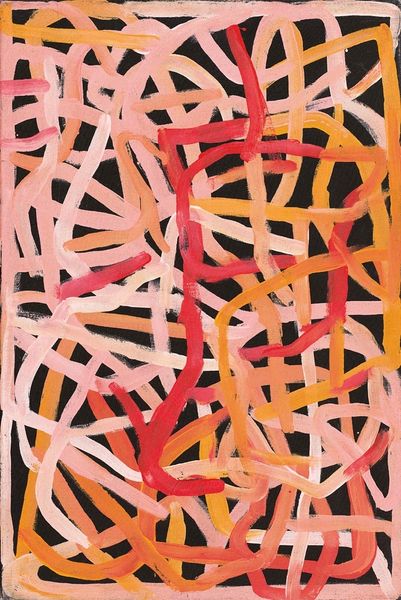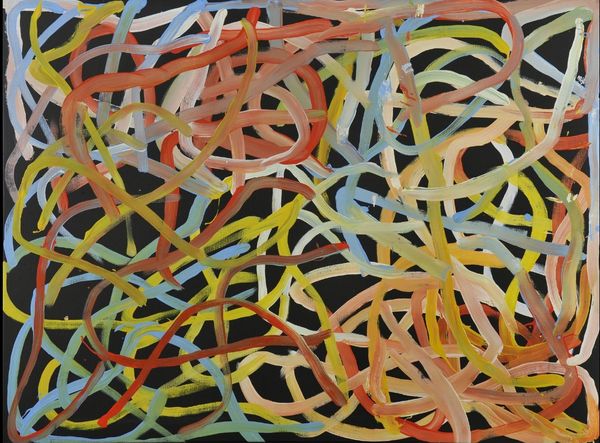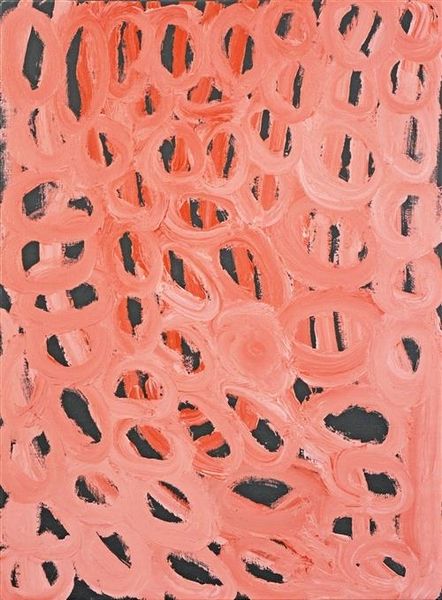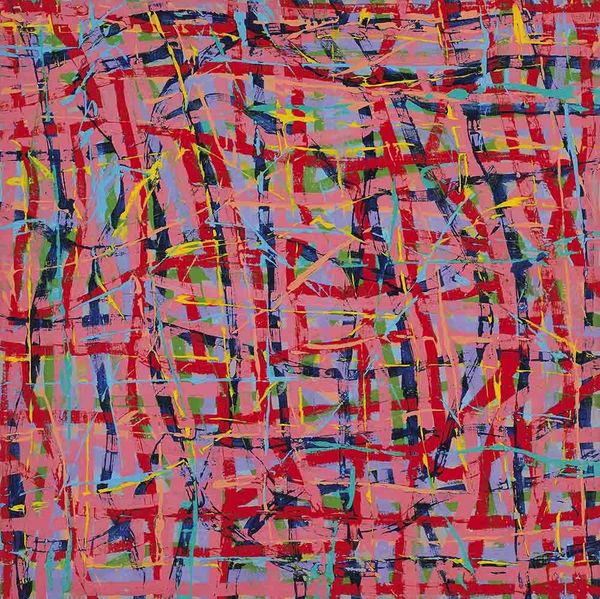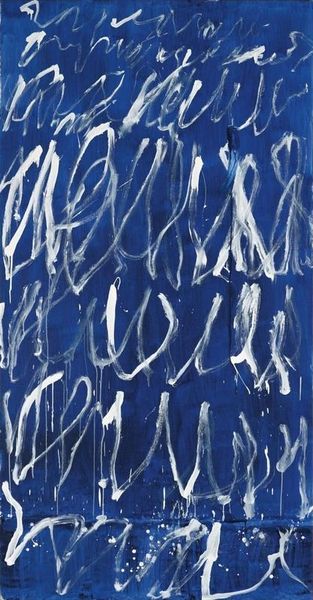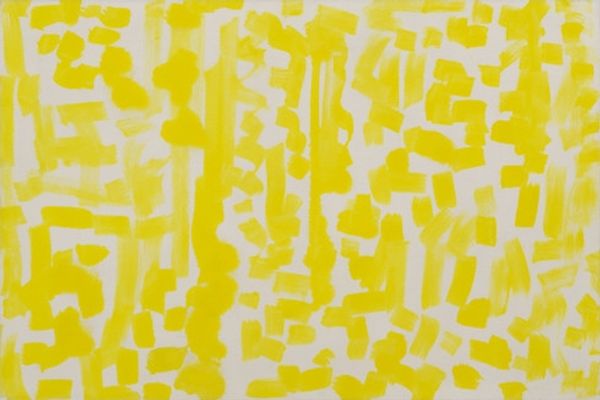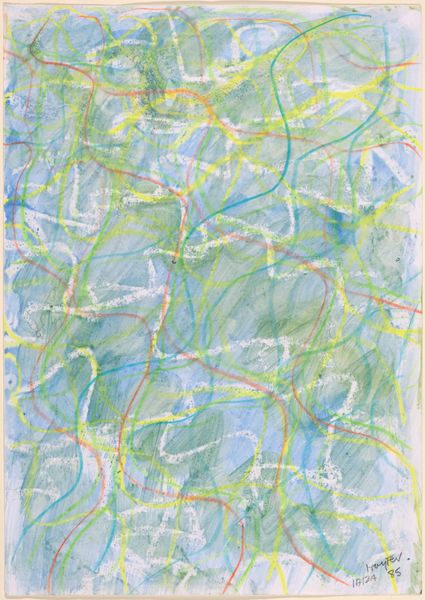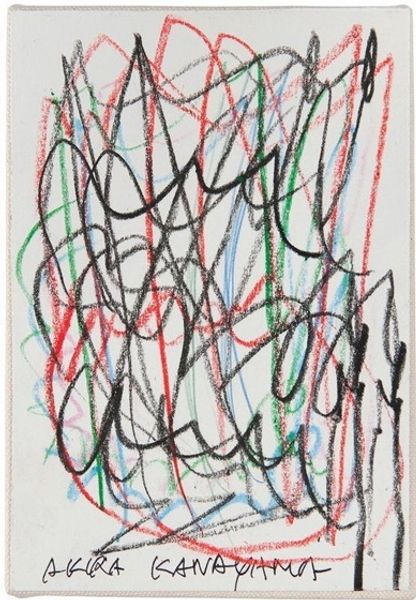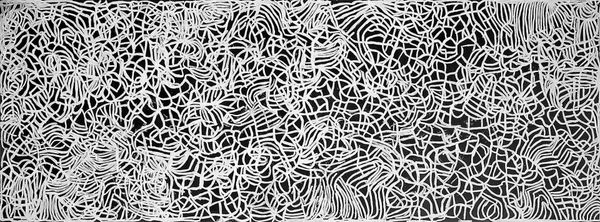
painting, acrylic-paint
#
contemporary
#
organic
#
painting
#
acrylic-paint
#
abstraction
#
line
Copyright: Emily Kame Kngwarreye,Fair Use
Editor: So, here we have Emily Kame Kngwarreye’s "Awelye," painted in 1995 using acrylic. It's striking how the lines seem to dance on the canvas. What historical perspective can you share about this particular piece? Curator: The impact of colonization and subsequent interventions had a transformative influence on indigenous art in the late 20th century. As Kngwarreye began to paint professionally, she came into the public eye when her work resonated on an international stage. The title, Awelye, means "women's ceremonial body painting," reflecting the cultural heritage. It’s tempting to read this abstraction as pure form, but we need to think about the changing function and circulation of indigenous imagery. Do you see how it challenges traditional notions of art authorship? Editor: That's fascinating. It looks organic, like root systems almost. Were there specific exhibitions that really catapulted her work? Curator: Yes, and the exhibitions and collections that promoted her work matter. The rise of indigenous Australian art in the Western market reveals complex narratives of appropriation and cultural exchange. How does positioning an indigenous painting such as this one impact what we might see as “contemporary” art today? Editor: So it’s not just the artist's personal story but also the story of its reception and where it’s displayed. Thinking about that makes the painting feel much more connected to broader political currents than I initially perceived. Curator: Precisely! Its presence is always part of a bigger network. These organic marks tell layered stories. Editor: I've definitely learned to consider not only the 'what' but also the 'where' and the 'why' surrounding the work.
Comments
No comments
Be the first to comment and join the conversation on the ultimate creative platform.

